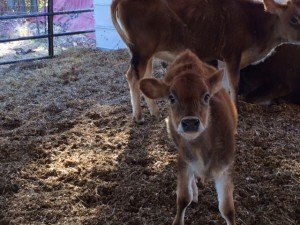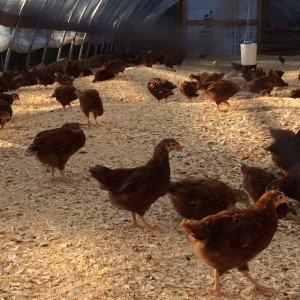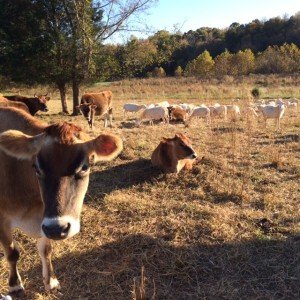With only 7 Saturdays left before the end of the shopping season, the Apex Farmer's Market shopping season I mean, it is time to start asking my favorite protein farmers about bulk purchases before the end of season and off season sales at their farms.Carolina Catch Seafood - Seafood, part of a coastal catcher's cooperative, possible off season sales at a location in Holly SpringsHeston Farms - Beef, family farmers, will do off season sales either at their farm in Roxboro, NC or possibly meeting in Durham so it is still a good idea to stock upLittle River Eco Farm - Pork (they also sell chicken, eggs, beef, turkeys), off season sales are unlikely so I will be placing a bulk order for the Mexican Chorizo and Sweet Italian Sausage that are mainstays in my kitchenOn a related note, the Apex Farmers Market is trying to go year round, possibly one market a month during the off season, but they need an enclosed winter location. Fingers crossed they can find something!
Read MoreChicago City Farm - Field Trip
I arrived in Chicago yesterday for an annual conference with a few hours to spare so I took the opportunity to go see City Farm in person! I have been looking forward to seeing this fantastic piece of urban farming/city renewal since I wrote about it in January, unfortunately the three days I am here are the three days they are closed to the public. Undeterred, I figured i could at least view it from the outside and see how the new location at W Division Street is coming along.The very warm, but tired Farm Director, Meredith, saw me taking pictures and came out to chat with me. Despite being at the farm since 5 am picking produce for the Farmer's Market, she gave me a micro-tour and we chatted about growing food.The lot looks even bigger in person and wraps north and east sides of the Chicago Fire Department building - the brick building to the right.It could not have been a more beautiful day to visit.Meredith was very excited about the tractor that will help the workers and volunteers accomplish more on this sprawling lot.It is wonderful to see young people engaging in a type of agriculture that doesn't just build farms, it builds communities. If you are ever in Chicago, preferably Wednesday-Saturday make this a must-visit!
Read More22+ Reasons to Love Stone Barns Center
There are many more reasons to love the Stone Barns Center for Food & Agriculture than the 22 that inspired this post, so after you have finished reading here, click on over to their site and see what the + is all about.Like so many others, I first learned of the farm at Stone Barns and the gifted Farm Director, Jack Algiere in Dan Barber's brilliant book The Third Plate, but it was not until last weekend that I actually visited the Center's website to see what I could learn about the farm itself.What I found was the truly inspired and inspiring gallery of images from each of the 22 weeks of the farm's 2015 CSA (community supported agriculture).Inspired because in addition to the beautifully photographed produce with variety labels, perfect for those of us looking to expand our varietal repertoires, the images also include a couple of lines for how to prepare them, sometimes individually and sometimes in combination with other items from that week's box, answering the ubiquitous CSA question of "Okay, I have it, now what do I do with it?".Inspiring because all the suggestions are for whole foods, so simply prepared that there are no recipes or even need of recipes.Part of the Stone Barns Center's mission is "to create a healthy and sustainable food system" and teaching a new generations of farmers how to grow healthy soil while growing healthy food is part of achieving that mission, but so is educating the consumers of that food system because it doesn't matter how healthy and sustainably food can be produced if the people shopping for food do not know what to do with a variety of fresh produce.Kudos to the Stone Barns Center for Food & Agriculture for this simple, but powerful idea to better serve their own CSA customers, but also for going a step further and making it available to anyone who might find themselves staring at a bunch of carrots (or leeks, or beets, or peppers, or kale, etc.) and wanting to make a great meal starting with whole ingredients!Click through the full 22 week gallery of their 2015 CSA and "Farm-Driven Cuisine".And a special thanks to the Stone Barns Center for allowing me to use two of the images from their gallery - in this case, a picture is worth four hundred and eleven words.
Read MoreCity Farm
"What if we ingeniously enriched that vacant land with waste wood products, waste food products and had a rich farm, employed local people to produce the healthy foods that community needs?" - Ken Dunn, founder of Resource Center and City FarmCity Farm is doing all of that and more! City Farm subsidizes their direct sales to the public by contracting with local restaurants wanting fresh, local produce on their menus. City Farm then picks up the restaurant's food waste to be recycled into compost to feed the rich soil that will grow more food.The images in this video capture the beauty of this little agricultural oasis against the backdrop of the Chicago skyline:For a more in depth look at how City Farm is diverting urban waste to create fresh, sustainable food for the local community:In December, City Farm began moving from it's location at 1204 N Clybourn to a new lot one block to the west. Each summer I attend a conference in Chicago for a few days in August and I can't wait to see the new farm when I am there!
Growing Food, Growing Farmers
I have been looking for a graph that shows the number of US farmers and the average age of farmers on the same graph, but looking at the graphs separately, the impression is still strong. We have less and less farmers each year (2% of the population) and the ones that are left are aging faster than many other industries (average 58.3 years) due to the very small numbers of young people joining the increasingly slim ranks.For the young people that do want to grow food for a living they must first overcome the high land and capital good costs to get started as well as knowing they are pursuing a career that expects much of them physically and mentally but that society as a whole does not particularly esteem. So I get very excited about the future of food when I see young farmers like these on Jenny Jack Sun Farm making a go of it on their 4 acres with sustainable practices that are not generally found in industrial agriculture.The next thing young, small-scale food growers have to overcome is the notion that somehow they are only playing at farming if they can't "feed the world" with their output. The history of this phrase and it's attendant expectations can be traced directly back to the "fence row to fence row" and "get big or get out" exhortations of 1971-1976 USDA Secretary, Earl Butz. Before Butz moved the finish line to feeding the world, US farmers were only expected to feed themselves and their own communities to be considered successful.For an interesting perspective on how far we have moved away from community farming, this timeline begins with the percentage of US workers being farmers in 1790 at 90% and details the steady, downward shift from there to 38% in 1900 and down to 2.6% in 1990 where the timeline ends. We will never have a farming population of even 25% again in the US, but something more than a mere 2% will be needed to return to a food system that is healthy and sustainable for both the US population that depends on it and for the land that will be expected to continue to produce food for many generations to come.And the current trend of less and less farmers that are getting older and older is not sustainable even in the short-term. With many of today's farmers already approaching 60, how many more years before our current 2% retire from their physically demanding jobs? Young people making a choice to farm and trying to feed their communities should be celebrated for taking on a tough job that we all depend on but clearly, not that many people want to do themselves.Kudos to the farmers of Jenny Jack Sun Farm and all the others like you!
Temperate Permaculture
Every revisit to the documentary The Fruit Hunters sends me researching what fruit and nut trees are adapted to my hardiness zone to plan my future orchard. This exercise always begins with a self-reminder that the majority of exotic fruit grows in tropical climates but contains the hope that this time I will discover some forgotten native treasures or cultivars that are not commercially viable for my temperate climate.This time, rather than searching by hardiness zone which brings up a predictable list of cultivars on sale from nurseries, I searched for the climate zone and found an intriguing list that included kiwi, medlars, pawpaws, persimmons and quince at the Temperate Climate Permaculture blog.John Kitsteiner is the blogger and owner of the farm, Bauernhof Kitsteiner in Bull's Gap, TN, roughly 5 hours west of Raleigh. I started watching the videos in his vlog and was excited to see that the most recent video was from just two days ago. It will be cool to watch his farm evolve in real time.
Farm Envy
I have farm envy.This is not anything new. My brakes frequently light up at red outbuildings, generous lots and dilapidated farmhouses. Farms with For Sale signs put me at risk for whiplash. Over the years I have learned to live with a certain level of farm envy and consider it my normal state of being. Then I watched The Fruit Hunters a couple of months ago and the desire for a couple acres ratcheted up a few notches immediately.Fruit trees take time to produce fruit, years in most cases. Berries too. My mind began to consider the idea of a couple of acres that I could start a little orchard with blue, black and raspberries on the land while I bide my time in the burbs between now and when I would be able to live on this imaginary farm full time.Then I visited Cozi Farms on a beautiful fall day yesterday and the farm envy reached an entirely new fervor.

 On over 60 beautiful, rolling acres, Suzanne is growing beef, milk, eggs, broilers, lamb and turkeys. It was inspiring both in aesthetics and what she is working toward - sustainable agriculture that improves rather than depletes the land it is on.While I don't want or need that many acres and have no interest (currently) in raising large meat animals, it nonetheless made me homesick for the little farm of my dreams...a few acres with chickens and maybe ducks, hopefully a small pond stocked with fish and plenty of raised bed gardens that I can grow most of what I need from while I watch the sun make it's yearly transit from high overhead to low in the southern sky each year.
On over 60 beautiful, rolling acres, Suzanne is growing beef, milk, eggs, broilers, lamb and turkeys. It was inspiring both in aesthetics and what she is working toward - sustainable agriculture that improves rather than depletes the land it is on.While I don't want or need that many acres and have no interest (currently) in raising large meat animals, it nonetheless made me homesick for the little farm of my dreams...a few acres with chickens and maybe ducks, hopefully a small pond stocked with fish and plenty of raised bed gardens that I can grow most of what I need from while I watch the sun make it's yearly transit from high overhead to low in the southern sky each year.

